I have written extensively about Flagstaff in the past. There are a lot of good things to say about this place. Flagstaff has just about everything you’d want in a mountain town-hiking, snow sports, a bunch of trees, and dudes with man buns who wear sandals in the middle of winter.
Heck, we even have our very own dog food factory. And, of course, Flagstaff has plenty of camping options located conveniently close to town.
Lots of people travel through Flagstaff. We sit at the convergence of multiple highways, and we are surrounded, on all sides, by popular tourist destinations. Such an influx of travelers makes Flagstaff a de facto tourism hot spot, where many folks like to hang around Flagstaff’s mountains, trails, and breweries. Some even get suckered into attending NAU.
As you might expect, camping is big around here. I’ve put together a guide for those looking to lay down a tent (or recreational vehicle) during their stay in Flagstaff.
Camping in Flagstaff
Table of Contents

Surrounded on all sides by the Coconino National Forest, Flagstaff has no shortage of opportunities for outdoor recreation. The United States Forest Service has constructed many campgrounds to accommodate all of the people having fun in the forest. The amenities provided in these campgrounds varies, as does the scenery.
Some cost a fee to stay per night, while others are free. You can find established campgrounds way out in the woods, in the hollowed out core of an extinct volcano, or perched above verdant canyons. There’s plenty of options to choose from.
Camping can also be had in and around many of the national parks and monuments in the Flagstaff area. Sunset Crater hosts the Bonito Campground, and the Grand Canyon has several of its own. If you’re visiting these locations, then these options may be more convenient for you.
One quality that I admire around these parts is the abundance of free and dispersed camping. The topography around Flagstaff, while punctuated by the occasional volcano or canyon, is mostly flat. There are many miles of forest roads criss crossing throughout the greater Mogollon Rim region.
It is commonplace to pick any forest road, drive away from main highways, and plop down a tent. With a few rules and regulations, this practice is legal, convenient, and best of all, free. I do so frequently.
Dispersed and Free Camping in Flagstaff
If you don’t want to pay for camping in Flagstaff, you really don’t have too. The vast ponderosa forests (the largest contiguous swathe of Ponderosa forest in the world, in fact) practically beg travellers to find a flat, quiet spot to bed down for the night.
As I mentioned, all you have to do is find a forest road, and pick a spot. It’s pretty easy. You just need to keep a few rules and regulations in mind:
- Camping must be done within 300 feet of a road.
- Camping must be at least 1/4th of a mile from water sources.
- You can stay in one spot for no more than 14 days at a time.
- All water, food, and waste must be taken out.
- And many others. See the supplied link.
When doing dispersed camping, it is important to adhere to all LNT Principles. America’s public lands are a treasured resource, and it is vital that we all do our parts to maintain them. By failing to respect the great outdoors, we only serve to threaten our own access.
Some principles are obvious, like packing out your trash, or not littering. Still, it is a good idea to read up on the finer points of leaving a trace.
The Edge of The World

In my mind the “Edge of The World” AKA “The End of The World” AKA East Pocket, represents some of the best camping in Flagstaff. Located way down at the end of the Woody Mountain Road, the End of the World affords a breathtaking view.
This campsite straddles the very edge of the Colorado Plateau, perched atop cliffs and canyons that drop 2000 feet down. Campers can rest high above the Verde Valley, with unforgettable views of the red cliffs of Sedona.
The pictures I have of the Edge of the World don’t really do it justice. Instead, I defer you to the website of photographer James Fleishel, who has produced some really beautiful photographs of this spectacular campsite.
Getting to The Edge of World takes a while. It requires at least an hour of driving down dusty forest roads. Campers will cross drainages, cow pastures, and rutted, rocky roads before finally arriving at this campsite. I have made the journey is a two wheel drive sedan, but others may feel more comfortable navigating in a high clearance, all terrain vehicle.
Snow, mud, and fallen trees may slow or halt your travel. This is a remote campsite, but the time and effort that it takes to arrive at The Edge of the World is well worth it.
Forest Service Campgrounds
Dispersed Camping isn’t for everyone. The money saved is often made up for in the extra effort it takes to bring in your own water, manage your waste, and adhere to Leave No Trace practices.
That’s why the US Forest Service constructed many established, paid campgrounds all throughout Coconino National Forest.
These campgrounds often come equipped with an established fire ring, picnic tables, and graded or paved roads. More commonly, campers will have access to running water, bathrooms, and even dumpsters.
At the more popular campgrounds, seasonal hosts will be there to help you check campsite reservations, and answer questions. Sometimes, they even have firewood for sale.
Most paid campgrounds within the Flagstaff Ranger District are open seasonally. They are closed in the winter, and reopen in the Spring. Nightly campsite fees typically range between $15.00-$30.00, with extra fees applicable if more cars are brought, or RVs are used.
Most campgrounds are walk ups, meaning that you don’t need a reservation. Keep in mind that some campgrounds, such as the Lockett Meadow campground, fill up fast during the peak season, making it difficult to find a spot. Others rarely fill up, leaving open spots abundant.
The following are some of the more popular campgrounds. I will include directions, as well as the nightly rate.
Lockett Meadow Campground
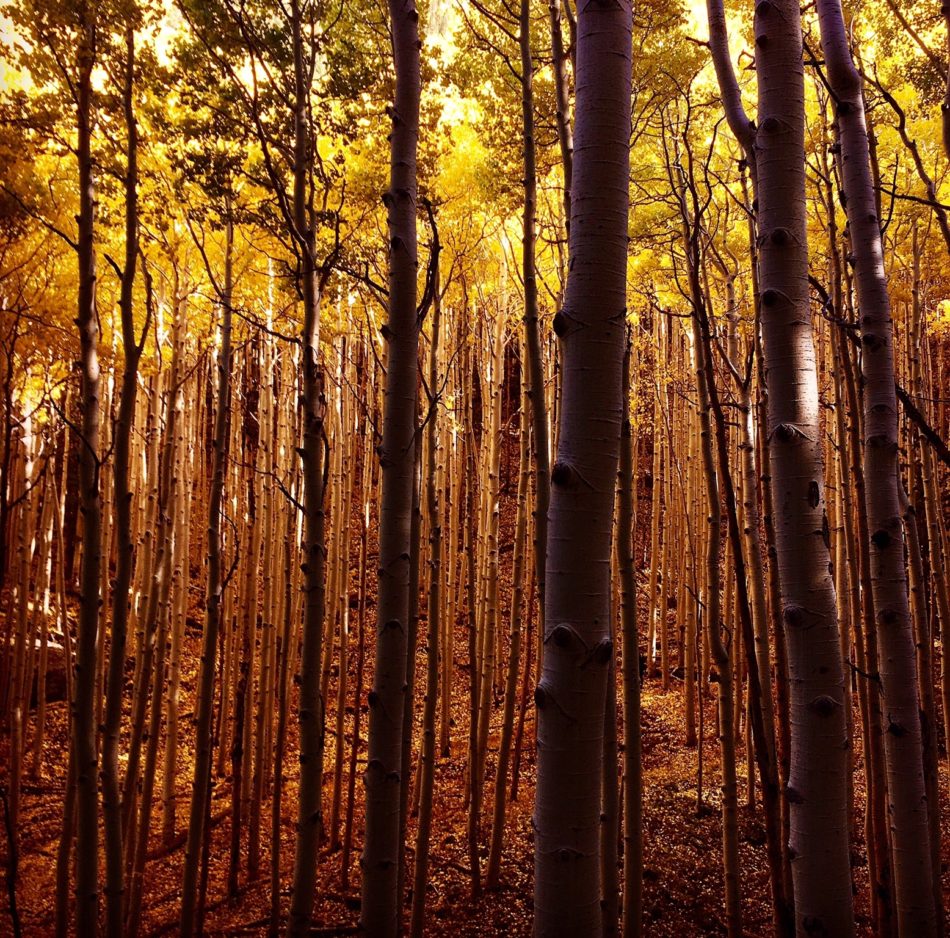
Description: Arguably considered the crown jewel of Flagstaff area campgrounds, the Lockett Meadow campground is a popular spot. Nestled within the Inner Basin of the San Francisco Peaks, Lockett Meadow allows campers to stay within a serene, mountain environment.
The views are stunning. On all sides, visitors are surrounded by craggy, wind swept peaks. These are the tallest mountains in all of Arizona. This environment feels more like the Rocky Mountains than it does Arizona.
The Fall is the peak season for visiting Lockett Meadow, and for good reason. The Inner Basin comes alive with vibrant color as the numerous Aspen Trees begin to change. It is difficult to find a campsite in Autumn, as people come from all over Arizona to watch as the seasons change. Even still, it is worth visiting for a simple day hike.
Hikers will love the Lockett Meadow Campground. The Inner Basin trail will allow hikers to climb high up into the Kachina Wilderness. They can connect to the Weatherford and Humphreys Peak trails, or even hike down to the Arizona Snowbowl.
Many use Lockett Meadow Campground as a basecamp for overnight adventures. Backpackers can often be seen coming and going, and ultralight tarp shelters line the campground. The peaks are home to many popular backpacking trails, including the Humphreys-Kachina loop.
Please keep in mind that there are very few sources of water on the Peaks. Your options will be to either pack in all your water, or melt snow. Camping is also restricted to elevations below 11,600 ft.
Running Water?:
No
Usage Fee:
$16.00 per night, up to 8 people; additional $8.00 for extra vehicle.
Directions to Inner Basin:
From Flagstaff, head East on Route 66. Take route 66 to Highway 89a. Follow 89a for 11.9 miles, before turning left onto Forest Road 545. Turn right at the fork in the road. Turn right onto Forest Road 553, and take this road to the Lockett Meadow Campground. Total travel time from downtown Flagstaff is roughly 40 minutes.
Bonito Campground
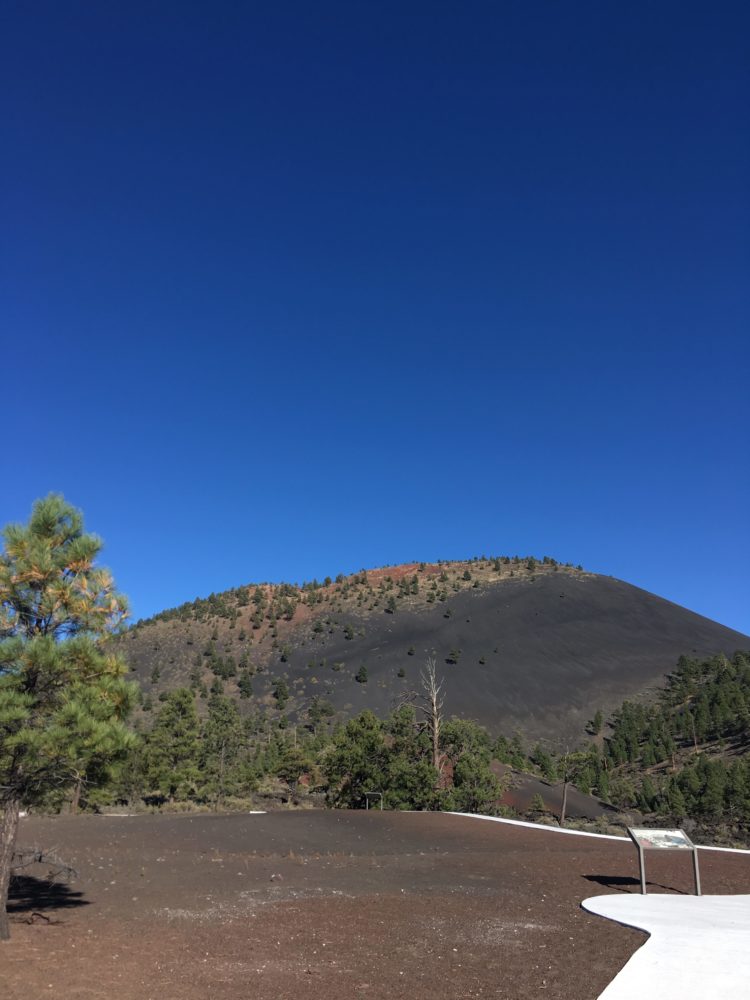
Description: Like a 2 for 1 deal, one admission fee gets you into both Sunset Crater National Monument, and Wupatki National Monument. The two are connected at the hip, and they are both popular, Flagstaff area destinations.
Unfortunately, travelers looking to camp within the monuments will have to look elsewhere. Neither destination comes equipped with a campground. Luckily, the Forest Service has constructed the Bonito Campground for all the campers visiting Wupatki and Sunset Crater.
The Bonito Campground is conveniently located across the road from the Sunset Crater visitor’s center. From here, campers have easy, quick access to Sunset Crater.
Continuing on the loop road, visitor’s can travel to Wupatki National Monument. Bonito features running water, fire rings, and even flush toilets.
Both of these national monuments showcase interesting examples of Flagstaff’s recent past. Sunset Crater is a well preserved cinder cone, while Wupatki represents an impressive feat of pre-columbian engineering.
Bonito Campground allows visitors to take their time to explore both of these monuments. The campground is located north of Flagstaff, just off of highway 89a. Travel time into town is typically less than 30 minutes.
Running Water?:
Yes!
Usage Fee:
$24.00/night; additional $8.00 per extra vehicle
Directions to Bonito Campground:
From Flagstaff, head east on route 66. Follow signs to highway 89a, North. Continue on 89a for 11.9 miles. Turn right onto Fire Road 545/Loop Road. After 4 miles, the Bonito Campground will be on you left.
Canyon Vista Campground
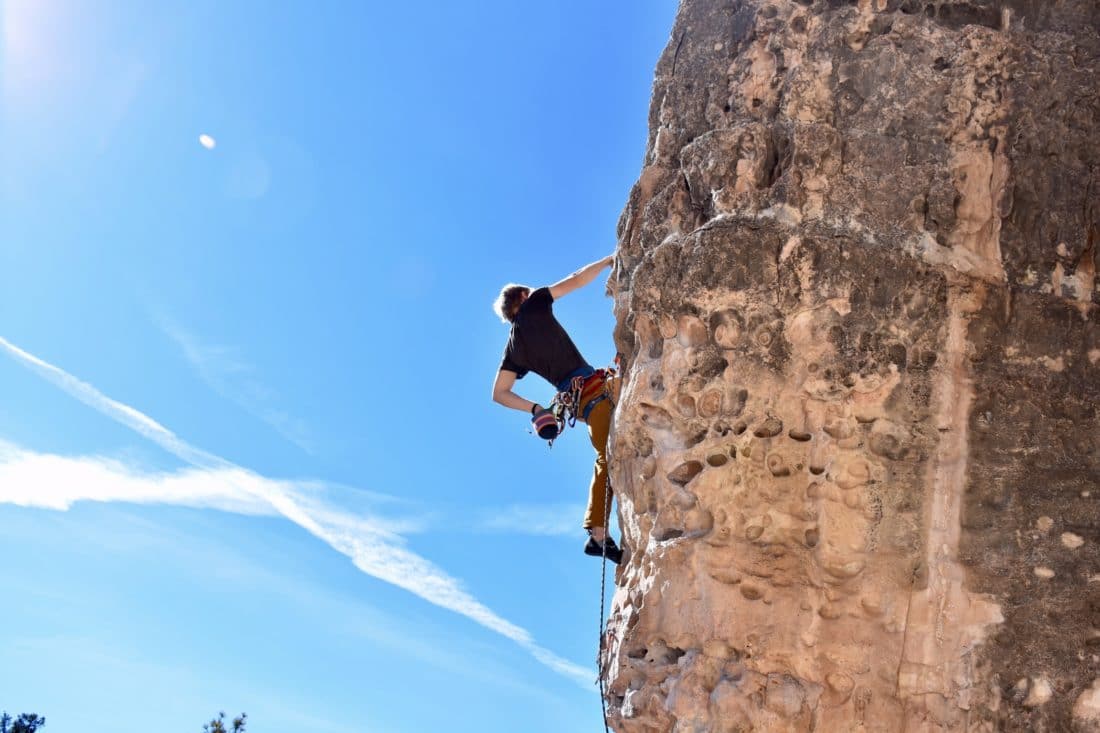
Description: The canyon Vista Campground, located just south of Flagstaff off of Lake Mary Road, is an ideal campground for hikers and Rock Climbers alike. It features 14 tent sites, complete with running water, vault toilets, and access to a variety of trails, including Sandys Canyon Trail, Fisher Point, the Walnut Canyon Narrows, and the Arizona Trail.
The Canyon Vista Campground is an easy, short walk to “The Pit”-one of Flagstaff’s most popular Sport Climbing areas. If you are interested in learning more about rock climbing in Flagstaff, you can check out my Brief Guide to Rock Climbing in Flagstaff, Arizona.
Canyon Vista is located conveniently close to town, and is only a 10 minute drive from downtown flagstaff. A camp host is usually stationed here, and will happily field any questions you may have.
Campers are just a few minutes drive from Lake Mary, which offers boating, fishing, and swimming opportunities. Here, anglers can catch trout, pike, and catfish.
This campsite is a great option for those wanting to stay close to town, while still having access to many different outdoor opportunities.
Running Water?:
Yes!
Usage Fee:
$20.00/night; additional $8 for an extra vehicle
Directions to Canyon Vista Campground:
From Flagstaff, head south on Lake Mary Road. After 6 miles, the Canyon Vista Campground will be on your left.
Ashurst Lake Campground
Description: Campers looking for good fishing, a quiet spot, a pretty views will find all they desire at the Ashurst Lake Campground. Sitting right along the shores of Ashurst Lake, Ashurst Lake Campground touts a boat launch, campfire rings, picnic tables, bathroom, and running water.
50 camp sites offer anglers and boaters the chance to wind down after a fun day on the water.
Ashurst lake is notable for being one of the few natural lakes in Arizona. It generally holds water all year, even during times of drought. Catfish, trout, and bass can be caught here, where it is a popular spot for local fishermen. Access to Lake Mary can be had in just a few minutes, making Ashurst a prime location.
Since you’re in the area, why not pay a brief visit to the Navy Precision Optical Inferometer (NPOI)? Managed jointly between the US Navy, and Flagstaff’s own Lowell Observatory, the NPOI is a big telescope involved in cutting edge astronomical research.
This telescope is located just a few minutes north off of Lake Mary Road. You can walk up to it, but you will be blocked by a fence. Still, it is cool to check out.
If you are interested in more astronomy, check out Lowell Observatory. Located near downtown Flagstaff, Lowell Observatory is where they discovered Pluto. These days, the observatory offers daily and nightly tours, telescope viewings, and Stargazing.
Alternatively, if the Ashurst Lake campground is full, the Pinegrove campground sits just near the turn off from Lake Mary Road. Pinegrove is a well maintained campground. It is unusual among Forest Service campgrounds, in that it offers paid showers.
Running Water?:
Yes!
Usage Fee:
$18.00/night, extra $8.00 per additional vehicle.
Directions to Ashurst Lake:
From Flagstaff, drive southeast on Lake Mary Road. Follow Lake Mary Road for several miles, until signs for Ashurst Lake appear. Turn left onto Forest Road 82E. Follow signs to Ashurst Lake.
Other Camping: KOA, Fort Tuthill, and Beyond
Flagstaff KOA
The Flagstaff KOA , located on highway 89a, is a good choice for those who can’t decide if they want to go camping, or stay in their living room. Here, you’ll find plenty of RV and tent sites, as well as cabins.
The local KOA offers the same amenities that all the other KOAs do, including RV hookups, WiFi access, running water, and cable TV. There is also a recreation center, complete with board games, and big screen Televisions.
The Flagstaff KOA is in a great location. It resides on the east side of town, right at the base of Mt. Elden. It is within spitting distance of Mt. Elden’s hiking trail network, and is just a few minutes from the flagstaff mall.
Access to I-40, Route 66, and highway 89a is very easy, allowing campers to easily travel to other Northern Arizona attractions.
In my mind, KOAs are a good choice if all the other campgrounds are full, or you have an RV. Otherwise, all of their luxuries and conveniences amount to an indoor, motel experience. Don’t let my opinion stop you. KOAs have served me well in the past. It is only that their nature detracts from the outdoors experience.
Fort Tuthill
A former base for the Arizona National Guard, Fort Tuthill represents an interesting piece of Flagstaff’s history. Tuthill was established in 1929 as a training grounds for the 158th infantry regiment of the Arizona Volunteer Corps.
The cool, pine forests of Flagstaff allowed troops to train in environmental conditions unlike the rest of Arizona. The 158th “Bushmasters” saw combat in the Spanish-American War, The Pacific Theater of World War 2, and in the modern day Afghanistan conflict.
These days, Fort Tuthill has since been decommissioned as a military base. Coconino County has turned it into a county park, complete with it’s very own campground. The campground Fort Tuthill has running water, campfire rings, RV sites, RV dump sites, and even $2 showers.
The nightly rates at Fort Tuthill are pretty decent, and are often cheaper than established Forest Service campgrounds. It is an even better deal when you realize all of the cool activities that are available at Fort Tuthill.
Visitors can go hiking, ride horses, and zipline through the trees at the Flagstaff Extreme Adventure Course. Tuthill also serves as a fairgrounds, and hosts everything from conventions, to rodeos, to mud races.
They even have concerts, and the author is proud to brag that he was once able to meet Modest Mouse backstage at a summer concert.
Fort Tuthill is just a few minutes away from Flagstaff. It offers quick access to town, and Oak Creek Canyon. Tuthill is a a great camping choice for those with RVs, or those who wish to stay close to Flagstaff.
Nightly Rates:
$10/night for tents, $20/night for RVs. $10/use for RV dump sites.
Water?:
Yes! And $2 showers!
Directions:
From Flagstaff, head south on I-17. Exit at Fort Tuthill/89a. Turn right at roundabout, and take second exit to Fort Tuthill entrance. Travel time from Downtown Flagstaff is less than 10 minutes.
Sedona, the Grand Canyon, and the Rest of Northern Arizona
Flagstaff is just one small part of the whole of Arizona. Natural wonder can be found in nearly any direction. Let’s not forget the vastness of Grand Canyon National Park, or the hiker’s playground in Sedona. These places are world famous for their natural beauty. Flagstaff is sandwiched right between the two, putting campers in a prime spot to visit both.
Grand Canyon Camping
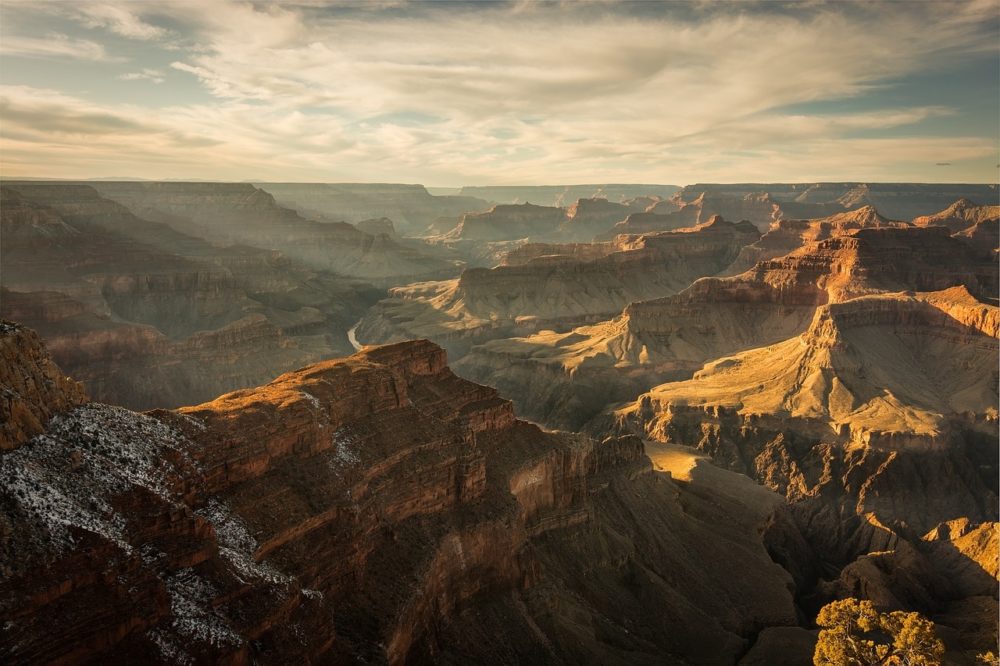
The Grand Canyon has its own campgrounds. Visitors to the ‘Big Ditch’ have the option to camp on the rim of the canyon. Here, campers can enjoy a traditional camping experience, with fire rings, picnic tables, and RV sites. Supplies can be bought at the numerous shops on the South Rim, and dining options are available at the famous El Tovar Hotel.
Camping is also available within the Grand Canyon. Many people like to hike into the Canyon, usually via the Bright Angel, or South Kaibab trails. A backpackers campground is available at Indian Gardens, or at river level at Phantom Ranch.
Just remember that water is not always available in the Canyon, and temperatures regularly exceed 100 degrees. As many cautionary signs will warn you: Hiking in is optional. Hiking out is Mandatory.
Sedona Camping
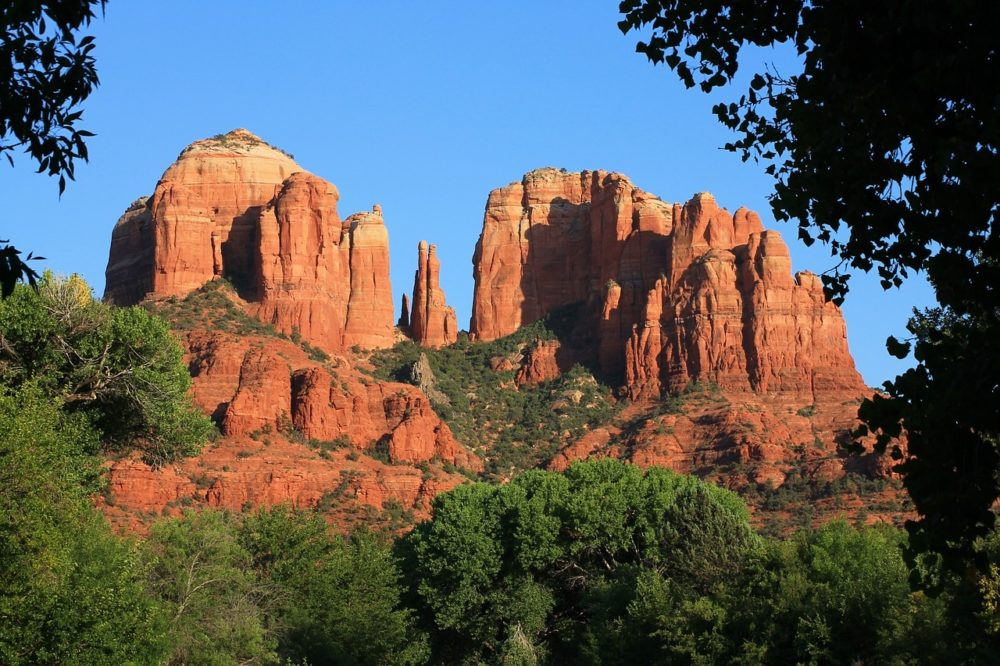
Vortexes, Crystals, and Hippies. Those are three words that usually come to mind when someone mentions Sedona, Arizona. You’re not wrong. A new-agey crystal shop can be found on every Sedona corner, from Midgley Bridge, down to The Village of Oak Creek. That, and the only Mcdonald’s in the world with Turquoise Arches.
Whether you’re in Sedona to go hiking, or to pry open that third eye, there are a number of sedona camping options to make your visit comfortable, and pleasant.
Camping options are limited in, or near the Sedona town center. Instead, most campgrounds are located further out from town.
North of Sedona, Oak Creek Canyon cuts into the Colorado Plateau like a slice out of the Thanksgiving pumpkin pie. Here, several campgrounds stand on the lush shores of Oak Creek. Near the northern end, closer to Flagstaff, campers can stay at Cave Springs Campground, or Pine Flat.
Both of these campgrounds allow access to Oak Creek Canyon’s biggest attractions, including the West Fork trail, and Slide Rock State Park. Further south, the Manzanita Campground is a great winter time campground.
Free Dispersed camping does exist in Sedona, but it is elusive. I’m not going to give up my favorite spots, but most dispersed camping can be found by looking at a Forest use map. Further out, campgrounds can be found throughout the Verde Valley region, and in nearby Prescott.
Conclusion
Flagstaff camping is abundant, cheap (often free) and can be found all over the greater Flagstaff region. Whether you are just visiting town, or are here to hike, rock climb, fish, and enjoy the great outdoors, there is a campsite suited to your needs.
Flagstaff is a beautiful place, and it is very camper friendly. I hope that this guide will serve you well. If you have any questions or comments, feel free to add drop a line in the comments section!
- The Best Campsites Around Big Bear California - February 26, 2021
- Hiking to the Hollywood Sign Via the Brush Canyon Trail - July 13, 2020
- Dirt Cheap Hiking and Backpacking Gear: The Most Affordable Gear on the Internet - July 4, 2020
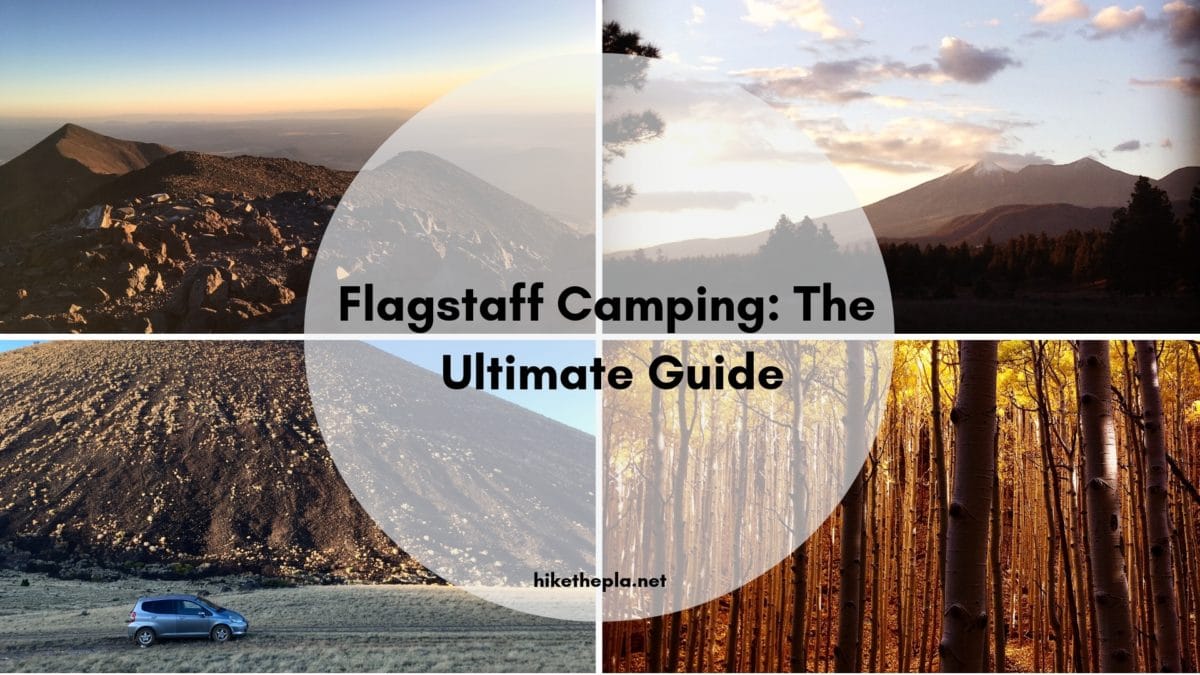
Very informative.